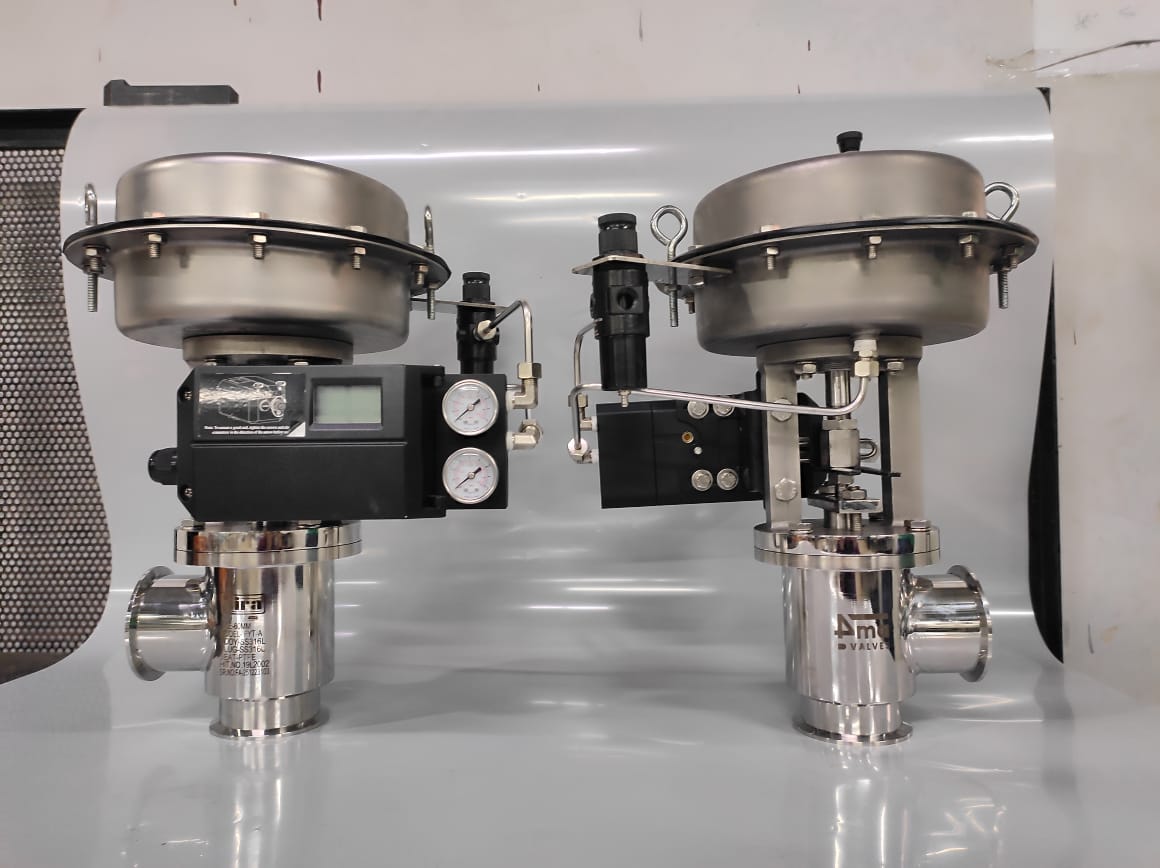Why Butterfly Valve is So Useful in Pharmaceutical Industry?
The pharmaceutical industry thrives on precision and purity. Every step in the complex process of manufacturing life-saving drugs requires meticulous control to ensure consistent quality and prevent contamination. Butterfly valves play a vital role in achieving this by offering a reliable and efficient solution for regulating the flow of liquids, gases, and even powders within these critical production lines.
Understanding the Butterfly Valve
Unlike valves with complex mechanisms like gate valves or globe valves, butterfly valves boast a simple yet effective design. They feature a disc-shaped plate that rotates on a central axis within a cylindrical body. A 90-degree turn of the handle positions the disc either perpendicular to the flow path, blocking it completely, or parallel to the flow path, allowing unrestricted passage. This simple quarter-turn operation makes them ideal for quick and easy flow control.
However, the true value of butterfly valves in the pharmaceutical industry lies beyond their basic functionality. Let’s delve into the key characteristics that make them a preferred choice:
-
Sanitary Design: Maintaining sterility is paramount in pharmaceutical production. Butterfly valves excel in this aspect with their smooth, crevice-free internal surfaces that minimize the risk of bacteria or contaminant build-up. These valves are often constructed from high-grade stainless steel, which offers excellent corrosion resistance and can withstand the harsh cleaning and sterilization procedures employed in pharmaceutical facilities.
-
Minimal Leakage: Even the slightest leakage in a pharmaceutical pipeline can have disastrous consequences. Butterfly valves, when properly installed and maintained, offer exceptional leak-tight closure. This is especially crucial for applications involving potent drugs or highly sensitive ingredients.
-
Versatility: Butterfly valves come in a wide range of sizes and materials, making them adaptable to diverse pharmaceutical applications. They can handle liquids of various viscosities, from low-viscosity solvents to thicker syrups and suspensions. Additionally, some specialized butterfly valves can even accommodate the flow of powders and granules used in certain drug formulations.
-
Cost-Effectiveness: Compared to other valve types, butterfly valves are generally more affordable to purchase and maintain. Their simple design translates to lower manufacturing costs, and their quarter-turn operation reduces wear and tear, leading to a longer lifespan.
-
Ease of Automation: Modern pharmaceutical manufacturing relies heavily on automation to ensure consistent quality and production efficiency. Butterfly valves are readily automated using pneumatic or electric actuators. This allows for remote control and integration into complex control systems, streamlining production processes.
-
Fast Operation: The quarter-turn operation of butterfly valves makes them ideal for situations where rapid flow shutoff is required. This can be critical in emergencies or for isolating specific sections of the pipeline for maintenance purposes.
Specific Applications in Pharmaceutical Manufacturing
Given their unique advantages, butterfly valves find application in various stages of pharmaceutical production:
-
Transferring liquids and gases: Butterfly valves are used extensively to control the flow of liquids like solvents, water, and process chemicals between tanks, reactors, and other processing equipment. They also play a vital role in gas lines used for aeration, purging, or inerting purposes.
-
Dosing and Metering: Precise control of ingredient flow is essential for accurate drug formulation. Butterfly valves can be used for this purpose, particularly in applications where large volumes of liquids need to be metered efficiently.
-
Aseptic Processing: For aseptic processes involving sterile environments, specially designed sanitary butterfly valves with polished surfaces and cleanable seals are employed. These valves minimize the risk of contamination during the production of injectable drugs and other sterile pharmaceuticals.
-
Powder Handling: Some specialized butterfly valve designs cater to the specific needs of powder handling in pharmaceutical applications. These valves incorporate features that prevent powder build-up and ensure smooth, reliable flow of powdered ingredients.
In conclusion, butterfly valves are not just simple on/off control devices; they are instrumental components in ensuring the smooth, efficient, and safe production of pharmaceuticals. Their versatility, affordability, and focus on hygiene make them an indispensable part of the pharmaceutical industry’s commitment to delivering high-quality, life-saving medications.






